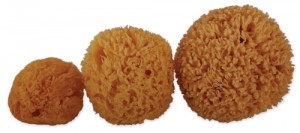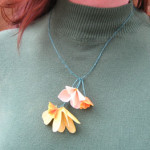 Humans are fortunate to have such a renewable resource as sea sponges in our oceans. It is remarkable how they survive pollution where other sea creatures can’t. That is because they have the ability to regenerate into new forms of life from even the tiniest fragments of another. Baby sponges resemble plankton and after a few days of free floating, will attach themselves to a hard surface and begin to grow.
Humans are fortunate to have such a renewable resource as sea sponges in our oceans. It is remarkable how they survive pollution where other sea creatures can’t. That is because they have the ability to regenerate into new forms of life from even the tiniest fragments of another. Baby sponges resemble plankton and after a few days of free floating, will attach themselves to a hard surface and begin to grow.
History dates as far back as the 5th century B. C. where the Greeks of the islands of the Aegean Sea were the founders of natural sponging. Bahamian sponge merchants were borne by a Frenchman who was shipwrecked in the Bahamas in 1841.
A sponge’s life span ranges from a few months to 20 years or more. Some thrive in the deepest regions of the seas, including sea caves where there’s little or no light. Some varieties even live in fresh water. There are approximately 5,000 species of sponges to date.
 Gloria Starita is the proprietor of Jade and Pearl in Florida, where her company bath sponges are sustainably harvested. She also offers Sea Pearls, completely natural sea sponge tampons. All of her company sponges exclude dioxin applications or synthetic fibers. Gloria’s tampon sponges are collected from the Bahamas and Greece, also in a sustainable manner. She reminds me that Cleopatra used sea sponge tampons.
Gloria Starita is the proprietor of Jade and Pearl in Florida, where her company bath sponges are sustainably harvested. She also offers Sea Pearls, completely natural sea sponge tampons. All of her company sponges exclude dioxin applications or synthetic fibers. Gloria’s tampon sponges are collected from the Bahamas and Greece, also in a sustainable manner. She reminds me that Cleopatra used sea sponge tampons.
 Reusable for six months or more, Gloria points out that sponge tampons are incredibly economical. And so are cosmetic sponges, which is another natural species. Makeup artists claim they are superior to synthetics and ideal for sensitive skin. A sea sponge is good for washing dishes too. They don’t retain that annoying odor that synthetic sponges do.
Reusable for six months or more, Gloria points out that sponge tampons are incredibly economical. And so are cosmetic sponges, which is another natural species. Makeup artists claim they are superior to synthetics and ideal for sensitive skin. A sea sponge is good for washing dishes too. They don’t retain that annoying odor that synthetic sponges do.
Gloria tells me the industry is closely monitored by suppliers as well as several environmental agencies. Jade and Pearl harvesters stay clear of coral reefs. In fact they’re hand-gathered by divers one by one, the old-fashioned way.
RELATED POST:
Organic Confusion Galore for Personal Care Products


3 Comments